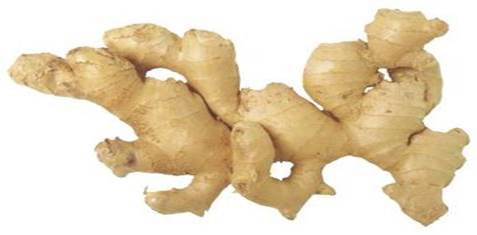Ginger
Varieties
INTRODUCTION
Ginger is grown in Malawi as an annual crop. Freshly harvested ginger consists of tangled clumps of interconnected rhizomes known as races or hands and branches known as fingers. Ginger is used mainly for food seasoning, in baking, in brewing and wine industry. The crop grows well in altitude of up to 1,500 meters above sea level. It thrives under hot and humid conditions. High rainfall of 1,500 to 3,000 mm per year, well distributed over the 8 months growing period is ideal. Ginger grows well in different soil types with free draining characteristics.

Figure 1 shows a picture of Ginger
SPECIFIC OBJECTIVES – The main objective is to equip farmers with knowledge on how to increase the production of ginger to satisfy the domestic demand and export any surplus and introduce ginger growing in suitable areas especially those that do not have reliable cash crops.
By the end of this topic, farmers should be able to know the following:
- Ways on how to increase Ginger production.
- How to prepare and manage Ginger fields
- Measures on controlling pests and diseases that attack Ginger.
- Ways of managing Ginger during Harvesting, Storage, consuming as well as Marketing.
ENVIRONMENTAL REQUIREMENTS OF GINGER PRODUCTION
-
TEMPERATURE – Ginger grows well in hot and high areas with altitude of up to 1,500 m above sea level. It also thrives under hot and humid condition.
- SOIL TYPE– Ginger grows well on different types of soil with good / free draining characteristics.
- RAINFALL - Ginger grows well in high rainfall areas with the range of 1500mm to 3000mm per year.
GINGER VARIETIES / CULTIVAR
- Currently there are no recommended ginger varieties. Farmers are therefore encouraged to grow local cultivars.
